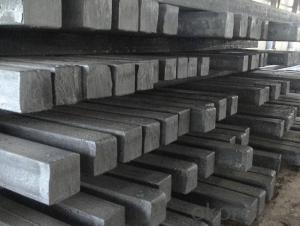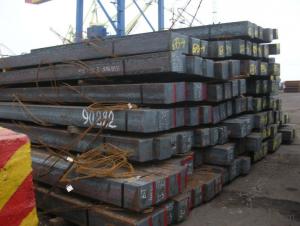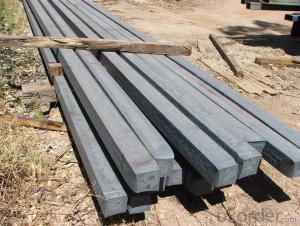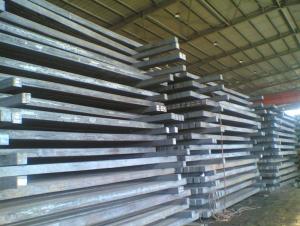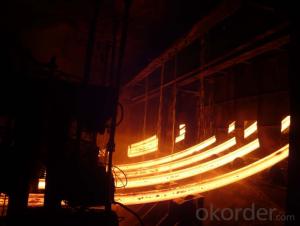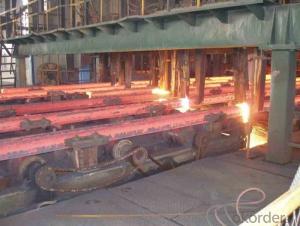Hot Rolled Square Steel Billet 3SP Standard 190mm
- Loading Port:
- Shanghai
- Payment Terms:
- TT OR LC
- Min Order Qty:
- 2000 m.t.
- Supply Capability:
- 10000 m.t./month
OKorder Service Pledge
OKorder Financial Service
You Might Also Like
Structure of Hot Rolled Square Steel Billet 3SP Standard 190mm

Description of Hot Rolled Square Steel Billet 3SP Standard 190mm
PPGI is made by cold rolled steel sheet and galvanized steel sheets as baseplate, through the surface pretreatment (degreasing, cleaning, chemical conversion processing), coated by the method of continuous coatings (roller coating method),
and after roasting and cooling. Zinc coating: Z60, Z80, Z100, Z120, Z180, Z275, G30, G60, G90
Alu-zinc coating: AZ60, AZ80, AZ100, AZ120, AZ180, G30, G60, G90
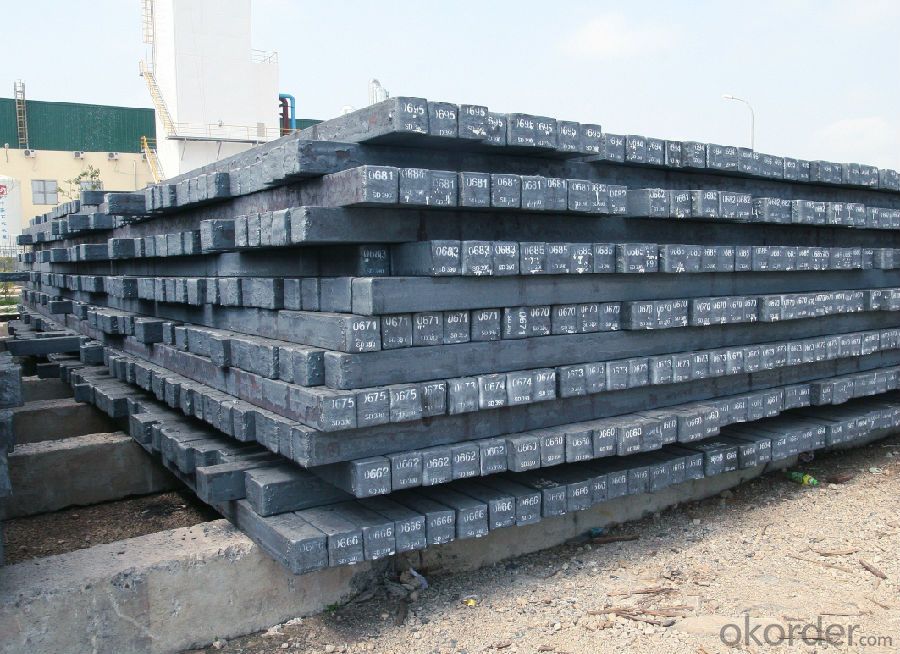
Main Feature of Hot Rolled Square Steel Billet 3SP Standard 190mm
1) Excellent corrosion resistance: The zinc layer provides a good protection of Pre-painted Galvanizeed Steel Sheet.
2) High heat resistance: The reflective surface of the material aids in efficiently reflecting the sunlight away and in turn reducing the amount of heat transmitted. The thermal reflectivity converts into energy savings.
3) Aesthetics: Pre-Painted Galvanized steel sheet is available in plethora of patterns and multiple sizes as per the requirements that given by our customers.
4) Versatility: can be used in the various areas.Standard seaworthy export packing: 3 layers of packing, inside is kraft paper, water plastic film is in the middle and outside GI steel sheet to be covered by steel strips with lock, with inner coil sleeve.
Applications of Hot Rolled Square Steel Billet 3SP Standard 190mm
1) Automotive bodies: filters, fuel tanks, etc.
2) Construction materials: roofings, welding pipes,
3) Electric and electronic appliances: computer cans, etc.
4) Steel cans: containers, etc.
5) Steel furniture: washing machines, refrigerators, microwaves, etc.
6) Drums
7) Office equipment: printer, recorders, etc.
8) Motors and transformers
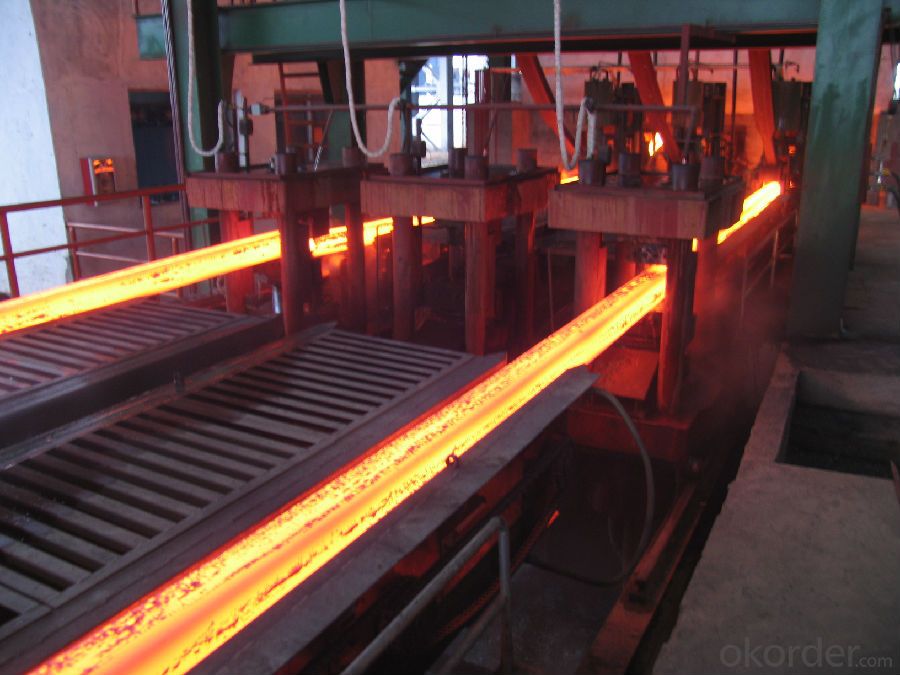
Specifications of Hot Rolled Square Steel Billet 3SP Standard 190mm
| Classified symbol | Yield Point Minimum N/mm2 | Tensile Strength Minimum | Elongation Minimum % | Application | ||||
| N/mm2 | Nominal Thickness mm (t) | |||||||
| JIS | Yogic | 0.25-0.4 | 0.4-0.6 | 0.6-1.0 | 1.0-1.6 | |||
| G3312 | specification | |||||||
| CGCC | CGCC | -205 | -270 | -20 | -21 | -24 | -24 | Commercial |
| CGCD | CGCD | --- | 270 | --- | 27 | 31 | 32 | Drawing |
| --- | CG340 | 245 | 340 | 20 | 20 | 20 | 20 | Structural |
| CGC400 | CG400 | 295 | 400 | 16 | 17 | 18 | 18 | Structural |
| CGC440 | CG440 | 335 | 440 | 14 | 15 | 16 | 18 | Structural |
| CGC490 | CG490 | 365 | 490 | 12 | 13 | 14 | 16 | Structural |
| CGC570 | CG570 | 560 | 570 | --- | --- | --- | --- | Structural |
| ASTM Designation | Yield Point Minimum | Tensile Strength Minimum | Elongation Minimum % | Application | Q/BQB 445-2004(China standard) | ASM A653/A653M | JISG 3312 | |
| ksi(MPa) | ksi(MPa) | TDC51D+Z | (CS TYPE A+Z) | CGCC | ||||
| A653(M)-99 CS TYPE A,B,C | --- | --- | --- | Commercial | TDC52D+Z | CGCD | ||
| A653(M)-99 FS | --- | --- | --- | Lock Forming | TS250GD+Z | (G250+Z) | - | |
| A653(M)-99 DS | --- | --- | --- | Drawing | TS300GS+Z | (G300+Z) | CGC 400 | |
| A653(M)-99 SS Grade33(230) | 33(230) | 45(310) | 20 | Structural | TS350GD+Z | (G350+Z) | CGC490 | |
| A653(M)-99 SS Grade37(255) | 37(255) | 52(360) | 18 | Structural | TS550GD+Z | (G550+Z) | CGC570 | |
| A653(M)-99 SS Grade40(275) | 40(275) | 55(380) | 16 | Structural | ||||
| A653(M)-99 SS Grade50(345) | 50(345) | 65(450) | 12 | Structural | ||||
| A653(M)-99 SS Grade80(550) | 80(550) | 82(570) | --- | Structural | ||||
FAQ of Hot Rolled Square Steel Billet 3SP Standard 190mm
We have organized several common questions for our clients,may help you sincerely:
1. How Can I Visit There?
Our company is located in Tianjin City, China, near Beijing. You can fly to Tianjin Airport Directly. All our clients, from home or aboard, are warmly welcome to visit us!
2. How Can I Get Some Sample?
We are honored to offer you sample.
3. Why choose CNBM?
1, ISO, BV, CE, SGS approved.
2, Competitive price and quality.
3, Efficient service team online for 24 hours.
4, Smooth production ability(50000tons/month) .
5, quick delivery and standard exporting package.
6, Flexible payment with T/T, L/C, Paypal, Kunlun bank, etc.
- Q:What are steel billets?
- Steel billets are semi-finished metal products that are typically rectangular in shape and made from molten steel. They serve as raw material for further processing and are commonly used in the production of bars, rods, and wire products.
- Q:What are the specifications for stainless steel billets used in the marine industry?
- The specifications for stainless steel billets used in the marine industry typically include a specific grade of stainless steel, such as 316 or 316L, which offers excellent corrosion resistance in marine environments. These billets are often required to meet certain standards, such as ASTM A276 or ASTM A484, which outline the chemical composition, mechanical properties, and dimensional tolerances for stainless steel products. Additionally, the billets may need to undergo specific heat treatment processes, such as annealing or solution treatment, to ensure optimal strength and corrosion resistance.
- Q:What are the different types of steel billets available?
- There are several different types of steel billets available, including carbon steel billets, alloy steel billets, stainless steel billets, and tool steel billets. Each type has its own unique properties and is used for various applications across industries such as construction, automotive, and manufacturing.
- Q:What are the different methods of steel billet surface finishing?
- There are several methods of steel billet surface finishing, including shot blasting, grinding, and sanding. Shot blasting involves propelling small metal or abrasive particles at high speeds to remove surface impurities and create a smooth finish. Grinding uses abrasive wheels or belts to remove material and achieve the desired surface texture. Sanding involves using sandpaper or sanding pads to manually rub the surface and achieve a polished finish. Other methods may also include acid pickling or chemical treatments to remove scale or oxide layers.
- Q:How are steel billets measured and classified?
- Steel billets are measured and classified based on their dimensions and chemical composition. The dimensions of a steel billet are typically measured in terms of length, width, and height. These measurements are important for determining the size and shape of the billet, which in turn affects its usability in various applications. Additionally, steel billets are classified based on their chemical composition. This is determined by analyzing the percentage of various elements present in the steel, such as carbon, manganese, silicon, and sulfur. The chemical composition of a billet is crucial in determining its mechanical properties, such as tensile strength, hardness, and ductility. The classification of steel billets is typically done according to international standards set by organizations such as the American Society for Testing and Materials (ASTM) or the International Organization for Standardization (ISO). These standards provide guidelines for measuring and classifying steel billets, ensuring consistency and quality across the industry. In terms of measurement, steel billets are typically measured using calipers or precision measuring instruments to obtain accurate dimensions. The length is measured from end to end, while the width and height are measured at their widest points. These measurements are often recorded in millimeters or inches, depending on the regional standards. After measuring the dimensions and analyzing the chemical composition, steel billets are classified into various grades or specifications. These classifications help in identifying the suitable applications and industries where the billets can be used. For example, there may be specific grades of steel billets that are suitable for construction purposes, while others are more suitable for manufacturing automotive parts or machinery. In conclusion, steel billets are measured and classified based on their dimensions and chemical composition. The dimensions of the billets are measured in terms of length, width, and height, while the chemical composition is determined by analyzing the percentage of various elements present in the steel. These measurements and classifications are essential for determining the usability and quality of the steel billets in different applications and industries.
- Q:Can steel billets be recycled?
- Indeed, steel billets possess the capability of being recycled. Steel, being an incredibly recyclable material, can easily undergo the recycling process when it comes to billets. These billets, usually created through casting, can be recycled once they are no longer necessary or have reached the end of their lifecycle, ultimately transforming into fresh steel products. The recycling procedure commences with the gathering and sorting of the steel billets, which are subsequently transported to a recycling facility. In this facility, they are melted down within a furnace. Once melted, impurities are eliminated, and the resulting molten steel is shaped into new billets or other steel products through a variety of shaping and casting techniques. Recycling steel billets not only aids in preserving natural resources and minimizing waste but also holds profound environmental advantages. In comparison to steel production from raw materials, the recycling process necessitates less energy and emits fewer greenhouse gases. Furthermore, recycling steel assists in decreasing the demand for iron ore mining, which can have adverse effects on the environment. All in all, steel billets can be recycled effectively, enabling the sustainable and responsible utilization of this versatile material.
- Q:What are the common quality control measures for steel billets?
- Some common quality control measures for steel billets include visual inspection for surface defects, dimensional checks to ensure the correct size and shape, hardness testing to verify the desired hardness level, chemical analysis to determine the composition of the steel, and non-destructive testing techniques such as ultrasonic or magnetic particle inspection to detect internal flaws or cracks. Additionally, mechanical property testing, such as tensile or impact testing, may be performed to evaluate the strength and toughness of the billets.
- Q:How are steel billets coated or painted?
- Steel billets can be coated or painted through several methods. One common technique is hot-dip galvanizing, where the billets are immersed in a bath of molten zinc. This process forms a protective zinc coating on the surface of the steel, preventing corrosion. Another method is electroplating, which involves the deposition of a thin layer of metal, such as zinc or nickel, onto the billets using an electric current. Additionally, steel billets can be painted using various coating systems, such as powder coating or liquid paint, to provide a decorative finish or additional protection against rust and environmental factors.
- Q:What is the role of steel billets in the construction of commercial buildings?
- The primary raw material used in manufacturing structural steel sections for commercial buildings is steel billets, which play a crucial role in the construction process. These sections, such as I-beams, H-beams, channels, angles, and plates, are created by melting and casting steel billets into various shapes and sizes. Once fabricated, welded, and assembled, these sections form the framework, columns, beams, and other load-bearing elements of the building. Steel is an ideal material for commercial buildings due to its high strength and durability. It can withstand heavy loads, resist deformation, and provide structural integrity. Additionally, steel billets are commonly used to produce long steel bars or rods, which serve as reinforcement in concrete structures. This combination of concrete and steel, known as reinforced concrete, offers both compressive strength and tensile strength, making it widely used in commercial buildings. Furthermore, steel billets are essential for providing stability and support to the overall structure. They help evenly distribute weight and loads throughout the building, ensuring the safety and integrity of the construction. Steel is also highly fire-resistant, reducing the risk of damage in the event of a fire and enhancing the overall safety of the building. In addition to their functional benefits, steel billets offer design flexibility and cost-effectiveness. They can be easily customized and fabricated to meet the specific requirements of the building design, allowing architects and engineers to create innovative and efficient structures. Moreover, steel structures are lightweight compared to traditional construction materials, potentially reducing construction costs by lowering the overall weight of the building. In conclusion, steel billets are essential in the construction of commercial buildings, providing the necessary strength, durability, stability, and fire-resistance required for the structural framework. Their versatility, cost-effectiveness, and design flexibility make them a preferred choice for architects, engineers, and contractors in the construction industry.
- Q:How are steel billets inspected for surface defects?
- To ensure the quality and integrity of steel billets, a variety of methods and techniques are employed to inspect them for surface defects. One way is through visual inspection, where trained inspectors carefully scrutinize the billets for any visible flaws such as cracks, scratches, pits, or unevenness. They utilize appropriate lighting and magnification tools to conduct a thorough examination of the entire surface. Another method in use is dye penetrant testing. This involves applying a liquid dye to the billet's surface, allowing it to seep into any cracks or defects. After a designated period, excess dye is removed and a developer is added. The developer brings out the dye from any defects, making them clearly visible and easily identifiable. Magnetic particle inspection is another widely utilized technique. During this process, the billets are magnetized, and iron particles are applied to the surface. Any surface flaws disrupt the magnetic field, causing the iron particles to gather around the defect, thus making them easily detectable upon inspection. This method proves particularly effective for identifying defects such as surface cracks. Ultrasonic testing is also commonly employed to inspect steel billets. It entails transmitting high-frequency sound waves through the material, which then produce reflections or echoes when encountering any surface defects or internal flaws. These reflections are detected and analyzed, providing valuable information about the defect's size, location, and type. Furthermore, eddy current testing can be utilized to inspect steel billets for surface defects. This method involves passing an alternating current through a probe positioned near the billet's surface. Any defects or variations in the material's conductivity cause changes in the eddy currents, which can be detected and analyzed to identify surface defects. In conclusion, steel billets undergo meticulous inspection utilizing a combination of visual, dye penetrant, magnetic particle, ultrasonic, and eddy current testing methods. This ensures that any surface defects are promptly identified and addressed, thereby guaranteeing the quality and reliability of the final product.
1. Manufacturer Overview |
|
|---|---|
| Location | |
| Year Established | |
| Annual Output Value | |
| Main Markets | |
| Company Certifications | |
2. Manufacturer Certificates |
|
|---|---|
| a) Certification Name | |
| Range | |
| Reference | |
| Validity Period | |
3. Manufacturer Capability |
|
|---|---|
| a)Trade Capacity | |
| Nearest Port | |
| Export Percentage | |
| No.of Employees in Trade Department | |
| Language Spoken: | |
| b)Factory Information | |
| Factory Size: | |
| No. of Production Lines | |
| Contract Manufacturing | |
| Product Price Range | |
Send your message to us
Hot Rolled Square Steel Billet 3SP Standard 190mm
- Loading Port:
- Shanghai
- Payment Terms:
- TT OR LC
- Min Order Qty:
- 2000 m.t.
- Supply Capability:
- 10000 m.t./month
OKorder Service Pledge
OKorder Financial Service
Similar products
New products
Hot products
Related keywords
